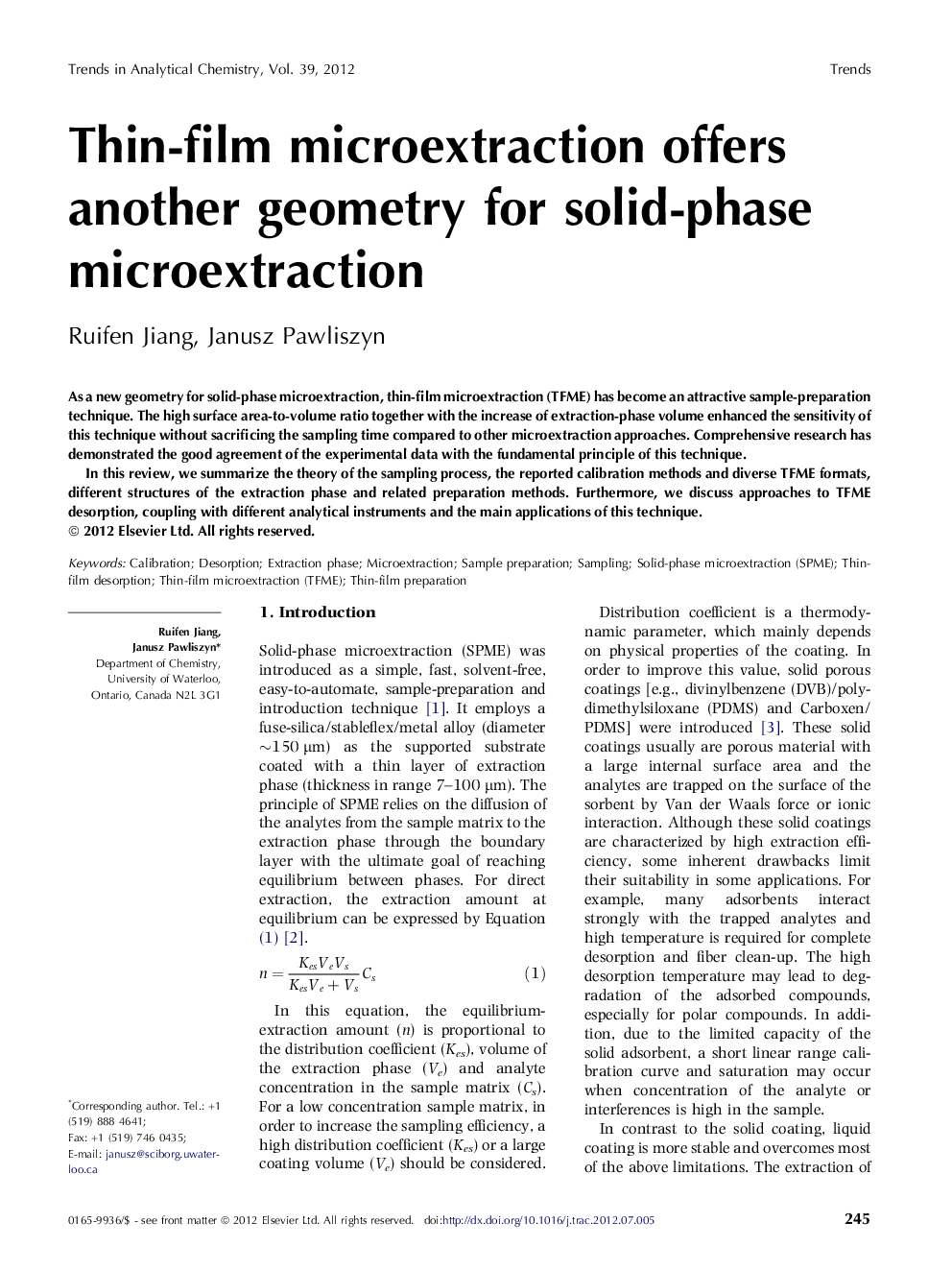| Article ID | Journal | Published Year | Pages | File Type |
|---|---|---|---|---|
| 1248066 | TrAC Trends in Analytical Chemistry | 2012 | 9 Pages |
As a new geometry for solid-phase microextraction, thin-film microextraction (TFME) has become an attractive sample-preparation technique. The high surface area-to-volume ratio together with the increase of extraction-phase volume enhanced the sensitivity of this technique without sacrificing the sampling time compared to other microextraction approaches. Comprehensive research has demonstrated the good agreement of the experimental data with the fundamental principle of this technique.In this review, we summarize the theory of the sampling process, the reported calibration methods and diverse TFME formats, different structures of the extraction phase and related preparation methods. Furthermore, we discuss approaches to TFME desorption, coupling with different analytical instruments and the main applications of this technique.
► Thin-film microextraction offers a new geometry for solid-phase microextraction. ► Experimental results show thin-film microextraction has good agreement with theory. ► To develop thin-film microextraction calibration is important for real applications. ► A desorption method is a challenge for thin film microextraction to be widely used. ► Review of application of thin-film microextraction to gas, liquid, solid sampling.
